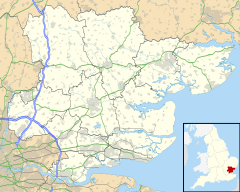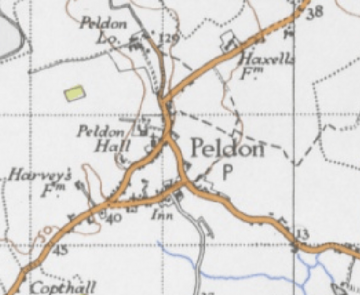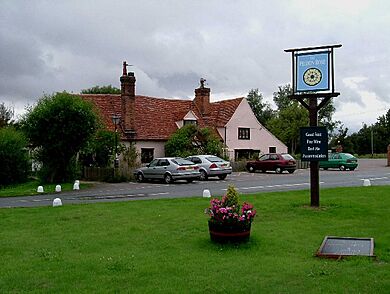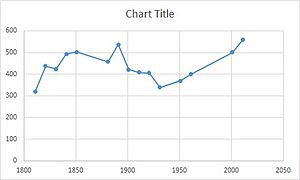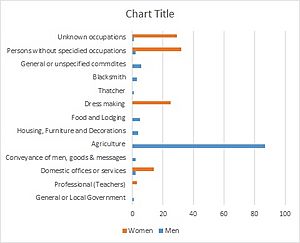Peldon facts for kids
Quick facts for kids Peldon |
|
|---|---|
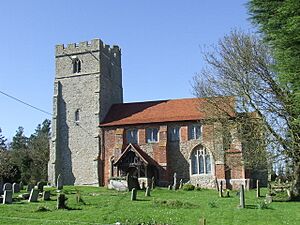 St Mary's Church, Peldon |
|
| Population | 559 (2011 Census) |
| Civil parish |
|
| District |
|
| Shire county | |
| Region | |
| Country | England |
| Sovereign state | United Kingdom |
| Post town | Colchester |
| Postcode district | CO5 |
| Police | Essex |
| Fire | Essex |
| Ambulance | East of England |
| EU Parliament | East of England |
Peldon is a small village and parish located in Essex, England. It's part of the Colchester area. Peldon works together with nearby villages like Salcott, Virley, Great Wigborough, and Little Wigborough as part of the Winstred Hundred parish council.
The village is home to St Mary's Church, which is a very old and important building. In 2011, about 559 people lived in Peldon.
Contents
A Look Back: Peldon's History
Peldon has a long history! During the Iron Age and Roman times, people living near Peldon's marshes made salt. You can still find "red hills" in the area, which are mounds left over from this ancient salt-making process.
The village of Peldon was originally quite large, covering about 8.9 square kilometers. The 'manor' (a large estate with a main house) of Peldon was set up by William the Conqueror in 1086. Later, King Henry VIII gave this land to Sir Thomas Darcy. Over time, different local families owned the land.
The name 'Peldon' is very old. It first appeared in old English documents around 950 AD. It might mean 'Pylta's hill,' named after someone called Pylta. This shows that Peldon was a Saxon village, meaning it existed long before William the Conqueror arrived.
The Great Colchester Earthquake of 1884
Peldon was badly hit by a big earthquake on April 22, 1884. This earthquake measured 5.1 on the Richter scale. It damaged about 1250 buildings in the area, including churches and homes. People at the time said that every single building in Peldon was damaged, even the local church. This caused a lot of money problems for the village.
The Peldon Rose, a local inn built in the 15th century, still shows signs of this earthquake damage. There's even a rumor that the inn was connected to nearby Ray Island by a secret tunnel used by smugglers! In 1984, a festival was held in Peldon to remember the 100th anniversary of the earthquake.
Peldon During World War I
Peldon was also affected by the First World War. On September 24, 1916, a German airship called Zeppelin L33 was damaged during a bombing attack on London. It crashed at New Hall Farm, very close to a house. The family living there, the Lewises, had to run for their lives as the airship hit the ground. The crew got out, and soon after, the airship exploded. The crew had decided to land on land instead of the sea because they thought it would be too dangerous.
Peldon's Population and Jobs
According to the 2011 Census, Peldon had 559 residents. There were 291 males and 268 females. Most people between 16 and 74 years old (282 of them) had jobs. The most common job in Peldon was repairing cars and motorcycles, with 47 people working in that field.
Many people in Peldon are over 45 years old, making up about 53% of the residents. Out of 422 residents aged 16 to 74, only three people were unemployed. This means most people in this age group were working or were not working due to retirement or long-term illness.
The graph showing "Occupational structure in 1881" highlights a big difference in jobs for men and women back then. Men mostly worked in agriculture, which means farming. Farming was the main job in many parts of Britain at that time. However, many women in Peldon worked as dressmakers or in jobs that weren't clearly recorded.
St Mary's Church
St Mary's Church in Peldon is a very old building, dating back to the 11th century. It has parts from different time periods:
- The main part of the church (the nave) is from the 12th century.
- The tower was built in the 14th century.
- The roof is from the 16th century.
The church tower leans a bit. Some people thought this was caused by the 1884 earthquake. However, the tower was already leaning before the earthquake happened! It was even mentioned in a book from 1880. The leaning tower was probably caused by the ground sinking a little, not the earthquake.
The church has been repaired and updated many times over the centuries, especially after the 1884 earthquake. People in Peldon are still working to raise money to repair and improve the church today. A charity called The Friends of St Mary's Peldon has raised over £45,000 for this important building.
In the 1870s, people described the church as standing on a hill with a great view. It was restored in 1859, and during that work, they found parts of an even older Norman church inside!
Important People from Peldon
- John Ball (around 1338 – July 15, 1381) was an English priest. He played a big part in the Peasants' Revolt of 1381, which was a major uprising by common people against the government.
See also
 In Spanish: Peldon para niños
In Spanish: Peldon para niños


